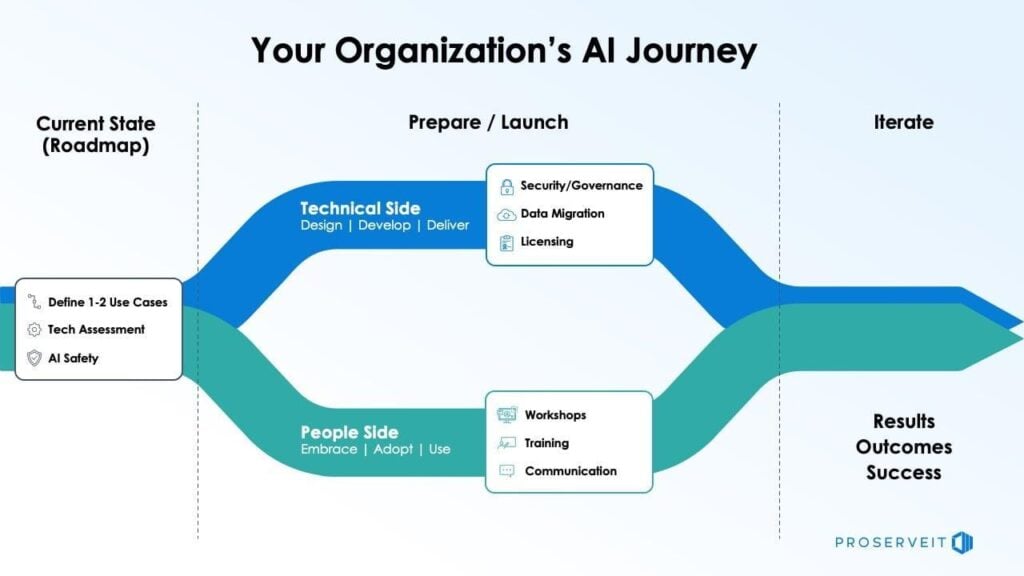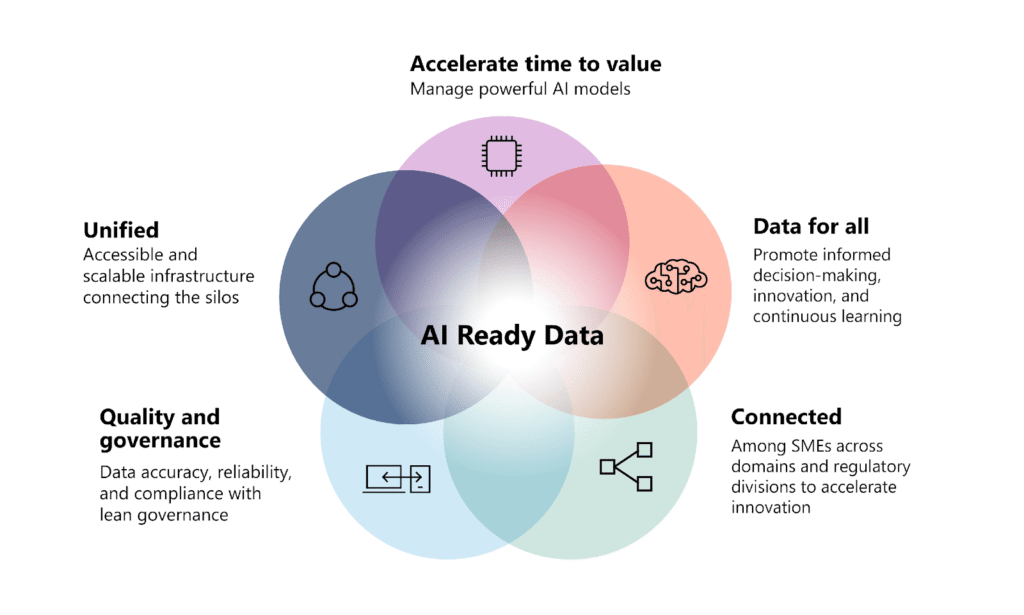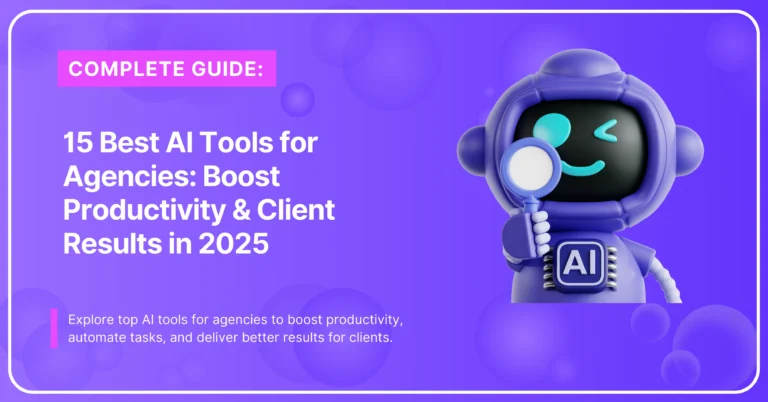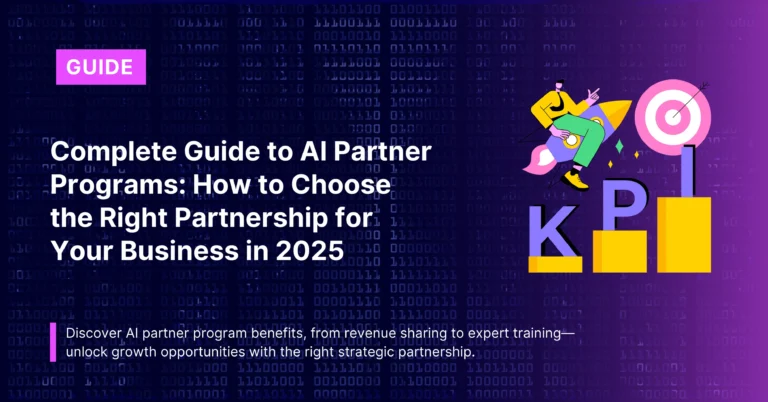The IT landscape is evolving faster than ever. 2025 isn’t the year to keep doing IT the old way. Clients want faster, smarter, more proactive solutions. And with AI in the spotlight, it’s time to rethink how you deliver services.

Make Money With AI
Join our Partner Programs!
Boost your reputation, drive revenue and grow your business with CustomGPT.ai.
Whether you’re an MSP, IT consultant, or tech service firm, this isn’t just about adding a chatbot or two. It’s about building a service portfolio that evolves with your clients.
This playbook for IT solution providers breaks down what you need to succeed—from AI integrations to sales frameworks, KPIs, and partner ecosystems.

Core Pillars of a Modern IT Solutions Playbook
1. Client Discovery and Needs Assessment
Understanding your client’s business is the first step to delivering meaningful value. AI tools can help analyze usage data, system health, and behavior patterns to uncover hidden opportunities.
Before offering solutions, ask:
- What business outcomes does the client value?
- Are they scaling, optimizing, or securing operations?
- What are their current tools and pain points?
Take Action:
Use AI-assisted QBR tools to evaluate client maturity and surface new service opportunities. Document results in a shared client strategy workbook.
2. Service Portfolio Optimization
Your service offerings must evolve with your clients’ expectations. Start by evaluating your current catalog to identify what’s driving value—and what’s becoming obsolete.
Here’s how to rethink your portfolio with AI in mind:
- Retain: Core services like infrastructure management and cybersecurity
- Refine: Add AI to improve efficiency (e.g., predictive maintenance, auto-ticketing)
- Retire: Services with low demand or low margin
Common AI Enhancements for Existing Services:
- Helpdesk → AI chatbots with escalation logic
- Monitoring → Real-time anomaly detection
- Backup → AI-optimized scheduling and storage management
Take Action:
Score each service by revenue, adoption, and AI potential. Prioritize upgrades or sunsetting accordingly.
3. Technical Delivery Framework
A high-quality service is only as good as your ability to deliver it consistently. That requires a reliable, standardized technical framework.
Ensure that your foundation includes:
- API-first architecture for easy AI integration
- Cloud-native platforms and container orchestration (e.g., Kubernetes)
- Centralized ITSM platforms with automation workflows
- Security practices such as zero-trust and RBAC
Take Action:
Audit your tech stack quarterly. Identify systems that need modernization to support scalable AI delivery.
4. Customer Experience and Success
Even the smartest technology falls flat if the client experience is clunky. Today’s buyers want services that feel personal, fast, and measurable.
Ways to boost experience:
- Use AI to personalize onboarding and usage recommendations
- Offer self-service dashboards powered by real-time data
- Run automated feedback loops to monitor satisfaction
Take Action:
Set a goal to improve CSAT or NPS by 10% through one new automation or AI feature every quarter.
Summary Table: Core Pillars at a Glance
| Pillar | Key Focus Areas | AI Opportunities | Take Action |
| Client Discovery & Assessment | Understand client goals, systems, and gaps | Predictive QBR insights | Use AI-assisted QBR tools and maturity scoring |
| Service Portfolio Optimization | Audit and evolve your service catalog | Enhance with automation, AI features | Score services by revenue, usage, and AI fit |
| Technical Delivery Framework | Build scalable, secure delivery infrastructure | Integrate AI-ready platforms, APIs | Conduct quarterly tech audits |
| Customer Experience & Success | Boost retention, satisfaction, and visibility | Personalized onboarding, NPS automation | Improve CSAT/NPS with one AI feature/quarter |
Building a Repeatable Sales and Marketing Engine
With a solid foundation built on the four core pillars, the next step is to scale your services through repeatable and strategic go-to-market execution.
From branding to lead generation and sales enablement, this part of the playbook ensures that your offerings reach the right clients—and convert consistently.

Branding and Positioning
Your brand should clearly communicate the value of your AI services in a way that sets you apart. Focus on what’s unique and credible.
Example brand positions:
- “We help SMBs use AI to secure and scale IT operations.”
- “AI-native IT partner for regulated industries.”
Use your certifications (like SOC 2, ISO 27001) and trusted vendor partnerships to build trust.
Demand Generation Tactics
Today’s buyers educate themselves long before reaching out. Your demand gen efforts should meet them where they are—with helpful content and smart targeting.
Key tactics include:
- SEO-optimized content around AI-enabled IT services
- Success story videos showing time-to-value
- Email nurtures and retargeting ads for high-intent leads
Take Action:
Launch a 90-day campaign focused on a single AI service and track engagement to learn what resonates.
Sales Enablement Tools
Equip your sales team to have smarter conversations using data, automation, and buyer-friendly content.
Must-have tools:
- Guided solution builders (based on client size or vertical)
- ROI and TCO calculators for AI add-ons
- Proposal templates tied to your modernized service tiers
- AI tools to prioritize deals and analyze win/loss trends
Summary Table: Sales and Marketing Engine at a Glance
| Component | Focus Area | AI Opportunities | Take Action |
| Branding & Positioning | Unique value, credibility, vertical fit | AI-enhanced messaging testing, sentiment analysis | Define your AI niche and refine your messaging quarterly |
| Demand Generation | Content, ads, campaigns | Predictive lead scoring, AI content assistants | Launch a 90-day AI-focused campaign and measure results |
| Sales Enablement | Tools to close deals faster | AI proposal generation, pipeline intelligence | Equip sales with calculators, playbooks, and AI tools |
Partner Ecosystem and Vendor Management
A strong AI partner ecosystem amplifies your capabilities. The key is alignment—your vendors should complement your AI roadmap, not complicate it.
Steps to evaluate vendor fit:
- Match vendor certifications to your industry focus
- Review APIs, integrations, and support levels
- Evaluate co-marketing or partner program benefits
Take Action:
Conduct a quarterly vendor review to assess alignment, performance, and opportunity for joint innovation.
Best Solution Partners for IT Solutions Providers
Let’s break down some of the top vendors and platforms IT providers should consider for AI and cloud service modernization:
CustomGPT.ai
A standout choice for providers looking to embed AI into service delivery. Build secure AI assistants to automate internal processes or enhance client support.
Why choose CustomGPT.ai:
- Full white-label options
- Strong API support
- Pre-built MSP use cases
CustomGPT Partner Program offers tiered incentives, technical support, training, and lead-sharing opportunities. You can also browse top-performing partners in the CustomGPT.ai Partner Directory to find inspiration and opportunities.
Microsoft Azure AI
Robust enterprise AI tools with seamless integration across the Microsoft 365 ecosystem, built-in compliance, and flexible deployment models.
AWS AI/ML Services
Designed for scalable AI and machine learning workloads. Offers a wide array of compute and data tools to support infrastructure modernization.
Google Cloud Platform
Ideal for data-centric AI initiatives with strong open-source compatibility, AI tooling, and built-in security features.
Cisco & Fortinet
Trusted providers in security, SD-WAN, and intelligent networking—essential for managing distributed IT environments securely.
Take Action:
Review your top 3 service categories. Choose a platform partner for each and evaluate based on APIs, training support, roadmap alignment, and partner program strength.
Partner Comparison Table:
| Vendor | Strengths | Best For | Partner Program Benefits |
| CustomGPT.ai | Secure AI agents, API support, MSP use cases | Automating client services, white-label AI | Training, lead-sharing, tech support |
| Microsoft Azure AI | Enterprise-grade tools, Office 365 synergy | Hybrid cloud clients | Azure Partner Network |
| AWS AI/ML | Scalable compute, rich AI toolset | Large-scale data processing | AWS Partner Central |
| Google Cloud AI | Open-source friendly, deep analytics | Data-centric applications | Google Cloud Partner Advantage |
| Cisco & Fortinet | Network security, SD-WAN | Secure distributed environments | Joint support, sales resources |
Metrics and KPIs for IT Solutions Providers
Tracking performance helps validate the business value of your services. Move beyond uptime and ticket count—modern KPIs connect IT outcomes to client success.
Essential AI-era metrics:
- CSAT or NPS improvement per automation rollout
- Time-to-Value (TTV) of new services
- ROI on AI-enhanced offerings
- Gross margin per service line
- AI model accuracy vs. business impact
Take Action:
Use dashboards to tie AI initiatives to business outcomes and review with clients during QBRs.

Common Mistakes to Avoid in IT Solutions Delivery
- Treating AI like a one-time project instead of an evolving capability
- Over-customizing services before validating demand
- Ignoring the need for retraining AI models post-deployment
- Poor data governance leading to biased or unreliable insights
- Choosing tools that don’t integrate well with your stack
Take Action:
Document lessons learned in your internal playbook and share wins (and stumbles) across teams.

FAQ
What makes an IT solution provider “AI-ready” in 2025?
An AI-ready provider has a modern infrastructure, reliable data pipelines, strong security practices, and the ability to integrate AI into services. They also invest in upskilling teams and regularly review AI performance.
Which existing managed/consulting services map naturally to AI add-ons?
Helpdesk, monitoring, compliance, and business analytics are top candidates. AI adds automation, prediction, and faster insights to these offerings with minimal changes.
How are consumption-based AI costs passed through to enterprise clients?
Providers use usage-based pricing (like per API call or compute hour) or bundle AI into premium service tiers. Clear communication of value is key to client adoption.
What certifications (SOC 2, ISO 27001, cloud-AI) do buyers require?
Most buyers expect SOC 2 and ISO 27001. Increasingly, clients ask for proof of responsible AI practices—like explainability and data governance protocols.
How do providers benchmark gross margin on AI workloads?
They track AI-related costs (like compute, licenses, and retraining) against service revenue. Dashboards help monitor profitability across AI-enhanced offerings.
Conclusion
This isn’t a one-and-done manual—it’s a living playbook. As AI evolves, so should your services, tools, and strategy. Regularly review client feedback, vendor changes, and emerging tech to refine your approach.
The most successful IT solutions provider in 2025 won’t just use AI—they’ll use it strategically, transparently, and in alignment with real client needs.
Ready to accelerate your agency’s growth? Discover the best SaaS reseller opportunities here.








